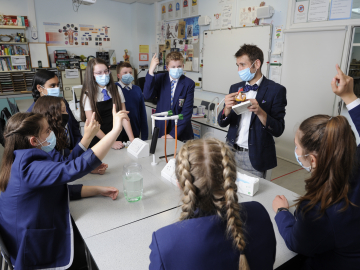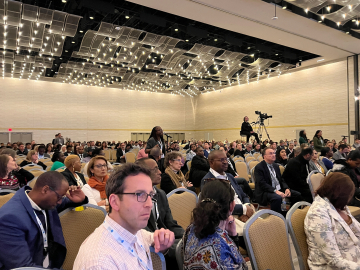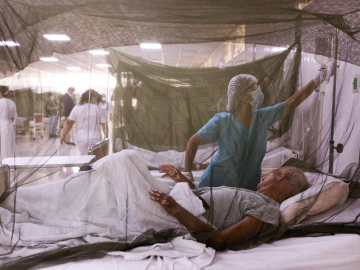The Best of 2016: Editors' Choices
We recognized some of the phenomenal reporting we found over 2016, and the expert journalists behind the stories. In case you missed them the first time, here's a second chance to catch some great reads.
HUMAN RIGHTS
Death in Manila
It’s one thing to read about Philippine President Rodrigo Duterte’s brutal antidrug campaign. It’s another thing indeed to see its effects on human beings.
New York Times photojournalist Daniel Berehulak spent 35 days in Manila, documenting 57 homicide victims. His images take us to the city’s storefronts, back alleys, funerals and graveyards to show the victims of Duterte’s policy.
“They are slaughtering us like animals,” one fearful bystander told the photographer.
Berehulak is also a powerful writer. Here’s how this remarkable piece of journalism begins: “You hear a murder scene before you see it: The desperate cries of a new widow. The piercing sirens of approaching police cars. The thud, thud, thud of the rain drumming on the pavement of a Manila alleyway — and on the back of Romeo Torres Fontanilla.”
“They Are Slaughtering Us Like Animals”
Daniel Berehulak, The New York Times
December 7, 2016
EBOLA
Ebola Noir
Thanks to a tip from CDC Director Tom Frieden for alerting us to host Shankar Vedantam’s NPR Hidden Brain podcast investigating the film noir-like story of a 2015 Ebola scare in Liberia.
A stabbing victim found dead in a Monrovia warehouse tests positive for Ebola. A response team of epidemiologists must now track down 35 gang members who may have been exposed, as well as their “Drug Mama” whose home could be the epicenter of the potential cluster outbreak. Set in the context of extreme poverty and a mistrust of government officials after years of civil unrest, the team must work against the clock to get all the players into quarantine before another Ebola outbreak occurs.
The piece examines the complex sociopolitical issues around epidemics and how epidemiologists must consider non-conventional solutions to address potential health crises.
“A Stabbing, A Possible Ebola Outbreak, And A 'Time Bomb'”
Chris Benderev, Shankar Vedantam, Tara Boyle, Renee Klahr, Jennifer Schmidt, and Maggie Penman
NPR’s Hidden Brain (podcast)
December 6, 2016
NONCOMMUNICABLE DISEASES
Not Over the Moon
Vice President Joe Biden’s cancer moonshot initiative has been described simultaneously as “visionary” and “a lot of rhetoric.” But there’s no debate that the effort is an inspiring response to the death of his son Beau from brain cancer in May 2015.
A Washington Post story quotes from an October 2016 letter that Biden wrote to President Barack Obama as part of a report on the moonshot proposal: “Even if we couldn’t save our own son, the science, medicine and technology are progressing faster than ever to save countless other sons and daughters.”
“Biden’s final ‘cancer moonshot’ report outlines progress and hurdles”
Laurie McGinley, The Washington Post
October 17, 2016
ADDICTION
US Opioid Crisis
The US opioid crisis has been covered countless times by news organizations. We found 2 standout stories.
Survival, 1 Minute at a Time
In a rare and powerfully written Washington Post feature article, Eli Saslow follows 31-year-old recovering addict Amanda Wendler as she struggles to survive and stay clean after a dozen years of addiction to pills and heroin.
The reporter follows Wendler for days as she tries to get help.
Saslow captures an indelible quote from Wendler about opioid drug’s relentless pull: “Days are forever. Do you even know how hard it is to go for one minute?”
“How’s Amanda?”
Eli Saslow, The Washington Post
July 23, 2016
OxyContin Hell
Los Angeles Times journalists delved into the story of OxyContin from Purdue Pharma. When OxyContin didn’t deliver 12 hours of pain relief as advertised, Purdue told doctors to up the dose.
The result was an increased risk of overdose and death. In the 20 years, more than 7 million Americans have abused OxyContin, according to the federal government’s National Survey on Drug Use and Health.
The LA Times reporters do a masterful job of weaving documents and personal stories in this investigation.
“‘You want a description of hell?’ OxyContin’s 12-hour problem”
Harriet Ryan, Lisa Girion and Scott Glover, The Los Angeles Times
May 5, 2016
ZIKA VIRUS
At the Forefront of Zika
In its first appearance in GHN, Vogue offered a compelling profile of the Brazilian pediatric neurologist Vanessa van der Linden, one of the first doctors to suspect a link between the Zika virus and the surge in babies being born with microcephaly across the Brazil.
Especially moving are descriptions of van der Linden working with mothers and their Zika-affected babies.
“Inside the Fight Against the Zika Virus”
Juliana Barbassa, Vogue
May 5, 2016
INJURIES
Jakarta 1-1-8
In Jakarta, a megacity with a woefully inadequate ambulance system and nightmarish traffic, many lives are lost needlessly. Jonathan Vit tells the story vividly, drawing on unexpected angles and sources including the beleaguered ambulance dispatchers.
Enriching his reporting with fascinating detail, such as comparing Jakarta’s average emergency response time (37 minutes) with other countries, Vit reveals that a well-meaning policy to provide residents with free ambulance transport for routine care made the problem much worse, bogging down the city’s ambulance fleet with non-emergency trips.
Vit leaves us with his sobering image: “A few years later, I passed another man lying in the street, this one a motorist knocked off his motorcycle. He was motionless and bloody, and the crowd was directing traffic around the body instead of offering any help. I checked the papers later that week but found nothing about the accident. Such things rarely make the news in Jakarta.”
Death by a Thousand Cars
Jonathan Vit, Foreign Policy
April 13, 2016
REFUGEES
Caring Culture
Drawing us in with the stories of Cambodian refugees, Heidi Shin (who has embarked on many interesting adventures—even diving with elderly mermaids in Korea!) reveals herself as a reporter who loves the craft of storytelling.
Weaving in the captivating narratives of their patients, Shin describes in fascinating detail how the doctors at a Lowell, Massachusetts clinic responded to an unusual dilemma: their sterile exam rooms and medical instruments reminded their patients, refugees from Cambodia, of the torture devices using during Cambodia’s genocide
Rather than forcing the refugees to adapt, these open-minded doctors made changes—from leaving doors open during exams, to offering some traditional Cambodian healing practices, to staffing people who lived through the same experiences. Shin’s story is a welcome uplifting demonstration of the power of the human spirit and capacity to adapt—both on the part of the refugees, and the doctors who cared about them so deeply.
“Why a US health clinic suggests Cambodian treatments for everyday maladies”
Heidi Shin, Public Radio International’s The World
March 15, 2016
ENVIRONMENTAL HEALTH
Shipping the Poison South
While the Flint crisis provoked outrage this past year, Joshua Partlow and Joby Warrick pulled our gaze to a lesser known tragedy: the US export of lead-bearing car batteries to Mexico.
Confronted with tightening regulations in the US, US metal recyclers began exporting their waste south, exploiting Mexico’s relatively lax controls on lead exposure. This spells disaster for the workers tasked with processing the batteries, who are suffering from lead poisoning and have little recourse or resources to fight the injustice.
Partlow and Warrick tell the stories of these workers, and others affected, with thorough attention to the details—interviewing officials, executives, watchdogs, and most of all the employees living with the consequences.
“A Dangerous Export”
Joshua Partlow, Joby Warrick, The Washington Post
February 26, 2016



